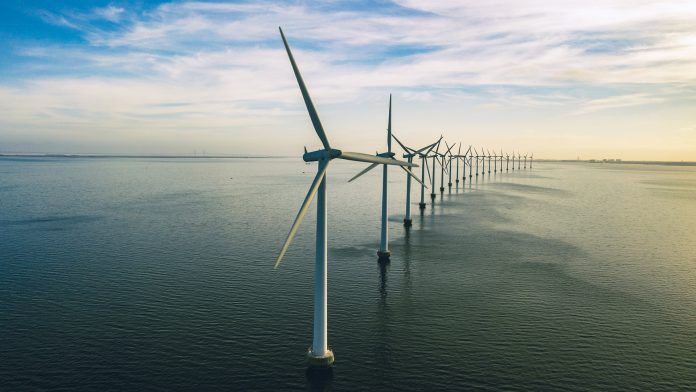A new study has found that sound pollution caused by offshore wind farms could disrupt the normal behaviour of marine mammals.
In the event that a new offshore wind farm is built, there is a period of loud, but in most cases, regulated construction. Once the turbines on the wind farm are fully operational, they offer a significant source of renewable energy, whilst releasing quiet but constant sound pollution.
On 26 May 2022, at approximately 16:25 Eastern US time, Frank Thomsen of the DHI – an environmental services provider based in Hørsholm, Denmark – will discuss how this constant low-level noise might be impacting wildlife in the area. Thomsen’s presentation is titled: “Operational underwater sound from future offshore wind turbines can affect the behaviour of marine mammals,” and is taking place as part of the 182nd Meeting of the Acoustical Society of America.
Alongside his fellow researchers, Thomsen has been evaluating published data regarding sound levels from operational wind farms in order to identify trends in turbine size. Overall, the data indicates that larger turbines emit greater noise.
New technology counteracts windfarm sound pollution
However, newer turbines that utilise quieter driving technology can, up to a point, mitigate the effects of larger turbines. The researchers discovered that older gear box technology reaches disruptive levels for marine mammals up to 6.3km away. Contrasting this, newer direct drive turbines are anticipated to only impact animal behaviour within a 1.4km radius.
“It is very unlikely that operational noise will lead to any injury or even hearing impairment, but behavioural changes could be a concern, as our study shows,” Thomsen explained. “It’s possible that impact zones of individual turbines overlap, but that still does not mean that the wind farm is a no-go area for marine life. We see harbour porpoises frequently swimming in the vicinity of turbines.”
The long-term impacts of this sound pollution on wildlife are still widely undetermined. The impact could depend on the number of turbines and their overlapping affected areas.
In theory, wind farm sound pollution could result in behavioural changes in marine mammals and mask calls from whales. However, harbour porpoises have frequently been seen swimming in the locality of wind farms in Europe, so the impacts of wind farms on marine mammal behaviour is likely to be varied from species to species.
“Since offshore wind farms have a relatively long lifespan, and there will be many of them, the potential impacts should not be overlooked,” added Thomsen. “The point of our work is to raise awareness.”
About DHI
The DHI Group is comprised of experts in the water environment, whether it be rivers, reservoirs, oceans, coastlines, or aquifers.
DHI’s knowledge of water environments represents 50 years of dedicated research and real-life experience from more than 140 countries. The group endeavours to make this knowledge globally available to clients and partners by channelling it through local teams and unique software.









